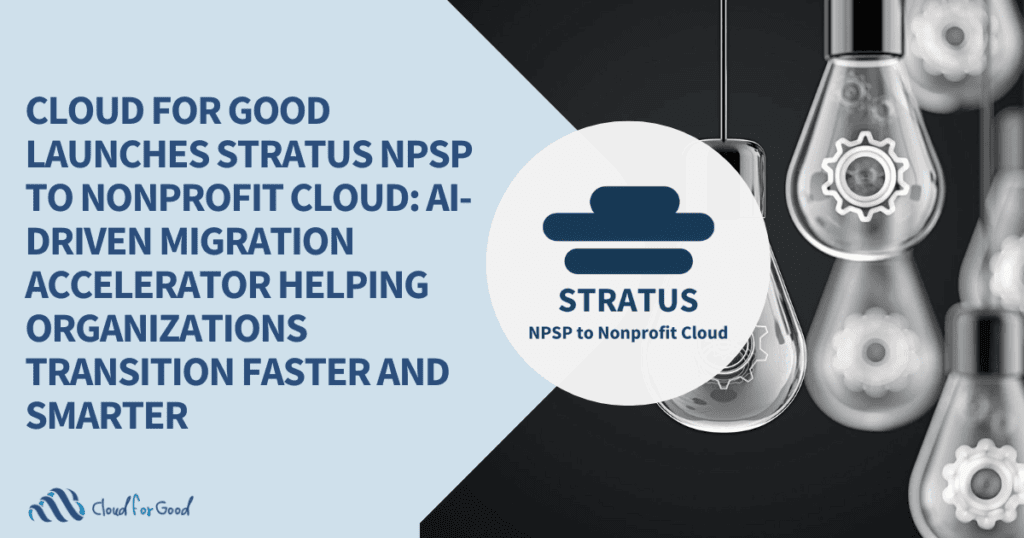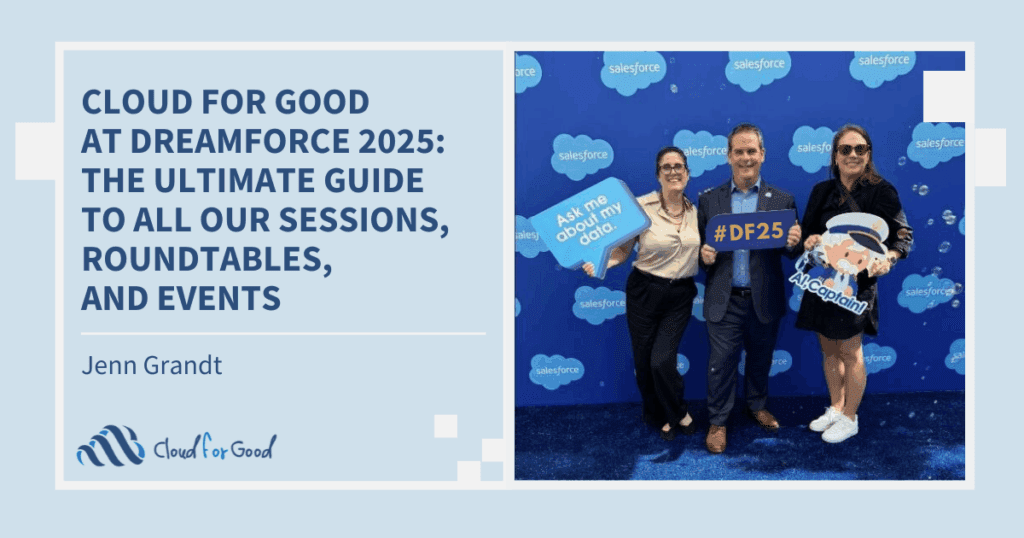Implementing a constituent relationship management (CRM) application can be a difficult project for organizations with multiple large complex departments. Rolling out a solution that caters to your development, marketing, program, and HR departments could be challenging due to the different strategies, processes, and products.
Salesforce CRM encompasses the people, processes, and applications that enable organizations to organize and manage their constituent relationship. A successful implementation needs a holistic approach that aligns staff training and changes in business processes with constituent needs through thoughtful planning. It also entitles implementing applications that will automate and consolidate constituent information. If CRM isn’t helping you to become more effective, increasing your constituent retention or improving staff satisfaction – don’t do it.
A well thought out implementation plan for an enterprise-wide CRM can impact organizations by:
- Ability to better understand your constituents
- Reduction of the total cost of ownership
- Better positioning for future shifts in strategy or changes in regulations or constituents needs
- Increase the likelihood of a successful strategy implementation
- Better governance of IT services
Why Organizations Fail to Maximize the Value from CRM Implementations
Technology itself will not solve all your organization’s pain points. A well thought-out implementation of a strategic solution could, however, deliver a high business value in a complex environment. When a CRM implementation lacks the clarity and depth it could end up as a shelf-ware that is not updated or adopted by end users. Technology is just a tool to implement your strategy it is not a silver bullet.
Another pitfall is a CRM implementation approach that lacks the vision of dealing with the overlap between the different departments. Recently I have been hearing from many organizations (clients and implementers) who believe that satisfying donor management/ development needs alone is considered enterprise implementations. In the long run, such implementations are doomed to fail if there is no focus or future roadmap to manage additional aspects of the organization’s mission.
Another very common problem is the lack of budget alignment between the cost of the technology and the cost of the changes needed to support the business’ processes. This is normally a result of a misaligned operational enforcement of the enterprise vision.
Doing it Right
Your organization will drive a positive return on investment from the enterprise-wide implementation through a planned CRM approach that is constantly evaluated. An assessment of the organization’s CRM strategy, staffing, processes, and technology will help you identify the relevant approach, resources, and tools to be put in place to champion a successful implementation. The value is achieving consistent processes, cross departmental coordination, and even driving organizational innovation.





